#Water resources engineering
Text
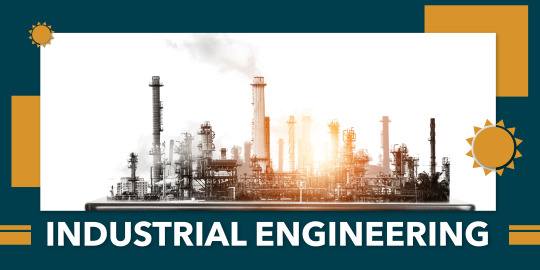
Advanced Industrial Engineering Solutions for Resource Extraction
Industrial engineering is a field that focuses on optimizing complex systems and processes within industries to improve efficiency and productivity. Professionals in this field analyze and design systems that integrate people, machines, materials, energy, and information to create streamlined operations. From manufacturing plants to service industries, industrial engineers play a crucial role in identifying bottlenecks, reducing waste, and enhancing overall performance. With their expertise in optimization and problem-solving, industrial engineers drive innovation.
#water resources engineering#flood mapping#industrial engineering consultants#engineering solutions#accounting#dam design solutions#mining site
0 notes
Text
last week's lab was so incredibly short and simple that i'm, like, staring at my lab notebook notes like, "is this it? is this really it?" because the experimental section of the report is literally 221 words and three paragraphs long.
#we made an ester but my only notes on the scent are 'crude product has rather strong unpleasant smell'#and 'washing glassware with water --> smells like almond jello'#like not even regular almonds it smelled Specifically like the almond jello from the mix you get at the asian grocery store#i'm also sensitive to strong scents so i also was like. deliberately trying not to smell things too closely#it's kind of funny bc i was also like. the first person in the lab to identify the smell they were like 'hey hua smell this'#n i was like 'ohhh that's familiar' n they were like 'i know right??' n we were like. but what could it be.#somehow i unlocked those memories of cooking as a child n i was like 'ohmygod *almond jello*' n they were like 'OMG YOU'RE RIGHT'#花話#anyway i also found a spectra database that is Not wiley spectrabase#(by which i mean that i went poking around the resources the prof has posted on the canvas n saw he linked to one)#so this means i can finally do those hnmr and cnmr spectra analyses! holy fuck!!#wiley spectrabase is my archest of archenemies because it doesn't!! let me see the spectra!!!!!!!!!!!#n like i Tried to go digging around for others but although i know of Some ways to find obscure but reliable data sites#i just Could Not find any others bc modern search engines are shiet#(but also it's kind of on me for not poking around the canvas a bit more myself lol)
15 notes
·
View notes
Text
had my first geology lab today and it was so FUN!!! in an alternate universe i became a geologist
2 notes
·
View notes
Text
To go to grad school or to not go to grad school 🤔
#tbh it’s a little complex because I kinda wanna get my PE license#but also more school in civil doesn’t hurt in terms of industry#but I also lowkey wanna be a professor#or break into coastal/ocean engineering which could potentially bring me more into MechE/ocean science stuff#but I love structural and traditional water resources too#idk I just wanna build shit and see how the forces of nature withstand them I guess#and there’s so many ways to achieve that goal
6 notes
·
View notes
Text
Water and Wastewater Treatment Equipment Market, Analyzing Market Forces, Technological Advancements, and Environmental Impacts
The global water and wastewater treatment equipment market size is anticipated to reach USD 90.0 billion by 2030, registering a CAGR of 4.6% over the forecast period, according to a new report by Grand View Research, Inc. The market is driven by increasing demand for clean and safe water in both developed and emerging economies. This is due to growing concerns over water pollution and scarcity, and the need for effective wastewater management.
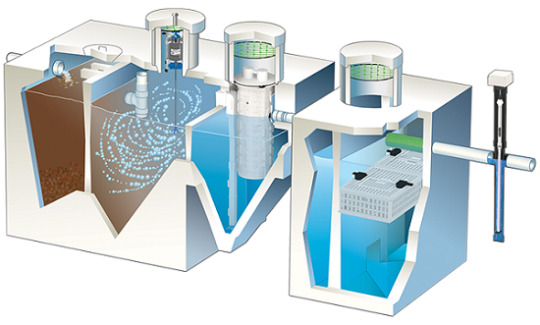
Water And Wastewater Treatment Equipment Market Report Highlights
Asia Pacific accounted for the largest revenue share of the global market in 2023, accounting for 35.1%, and is expected to maintain its dominance throughout the forecast period. This can be attributed to the presence of a strong consumer base that has led to significant demand for water and wastewater treatment equipment
By application, the municipal segment dominated the market with a revenue share of 66.0% in 2023. The increasing initiatives undertaken by governments, strict environmental regulations, and increasing awareness regarding water treatment are some of the factors contributing to the growth of the municipal segment over the forecast period
By process, the tertiary treatment segment dominated the market with a revenue share of 44.2% in 2023. Some of the drivers for the increasing demand for tertiary wastewater treatment are environmental protection, water scarcity, and the increasing demand for clean water. As these issues continue to be major concerns across the world, the demand for tertiary wastewater treatment is expected to grow over the forecast period
Major key players frequently engage in mergers & acquisitions and new product launches to maintain their market shares. For instance, in March 2022, Pentair plc, announced the definitive agreement to acquire Manitowoc Ice. The move was taken by the company to enhance its commercial water solutions platform and cater to the demand from the food service industry
For More Details or Sample Copy please visit link @: Water And Wastewater Treatment Equipment Market Report
Furthermore, the demand for decentralized wastewater treatment systems is expected to increase over the projected period, as these systems offer several advantages such as low operating costs, high treatment efficiency, and easy maintenance. Several companies are focusing on developing innovative decentralized wastewater treatment systems that can be easily installed in residential and commercial buildings.
Population growth, urbanization, increasing industrialization, and the need for clean water for various purposes such as drinking, agriculture, and industrial processes all drive demand for water and wastewater treatment equipment. Government regulations aimed at protecting the environment and ensuring public health also have an impact on the demand for water and wastewater treatment equipment.
The market players are constantly undertaking strategic initiatives such as mergers, acquisitions, partnerships, and new product launches to gain a competitive advantage. For instance, Ceco Environmental, a provider of air pollution control solutions, announced the acquisition of Compass Water Solutions, a provider of water and wastewater treatment equipment. The acquisition will enable Ceco Environmental to integrate Compass Water Solutions’ critical engineered solutions with its industrial water capabilities.
WaterAndWastewaterTreatmentEquipmentMarket #WaterAndWastewaterTreatmentEquipment #WaterTreatment #WastewaterManagement #EnvironmentalEngineering #SustainableTechnology #CleanWaterSolutions #IndustrialWaterTreatment #WaterPurification #GreenInfrastructure #InnovationInWaterManagement #WaterQualityControl #WastewaterRecycling #MarketTrends #EnvironmentalCompliance #SmartWaterTechnologies #RegulatoryFrameworks #EcoFriendlySolutions #EmergingTechnologies #ResourceRecovery
#Water and Wastewater Treatment Equipment Market#Water and Wastewater Treatment Equipment#Water Treatment#Waste water Management#Environmental Engineering#Sustainable Technology#Clean Water Solutions#Industrial Water Treatment#Water Purification#Global Market Analysis#Green Infrastructure#Innovation In Water Management#Water Quality Control#Waste-water Recycling#Environmental Compliance#Smart Water Technologies#Regulatory Frameworks#Eco-Friendly Solutions#Emerging Technologies#Resource Recovery
0 notes
Text
Types of River Protection Works by Water Resource Engineering
Rivers play a crucial role in shaping the landscape and supporting ecosystems, but they are also susceptible to various natural and human-induced threats. Water resource engineering encompasses a range of techniques and structures designed to protect rivers from erosion, sedimentation, and other potential hazards. In this article, we will explore the various types of river protection works…
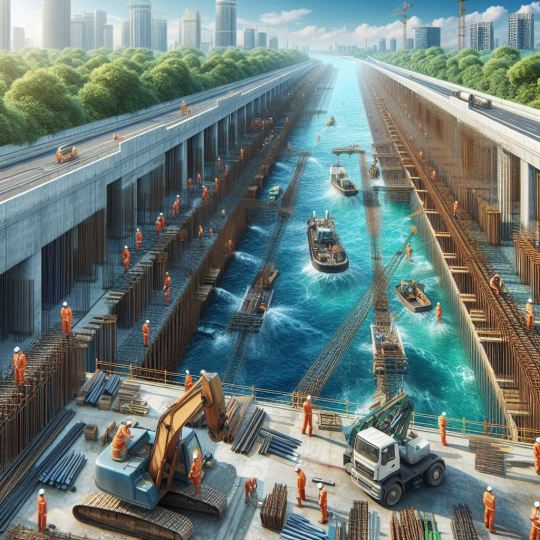
View On WordPress
#and bioengineering#dikes#gabions#including embankments#Retaining Walls#revetments#riprap#river training works#spur dikes#toe protection#Water resource engineering encompasses a variety of crucial techniques
0 notes
Text
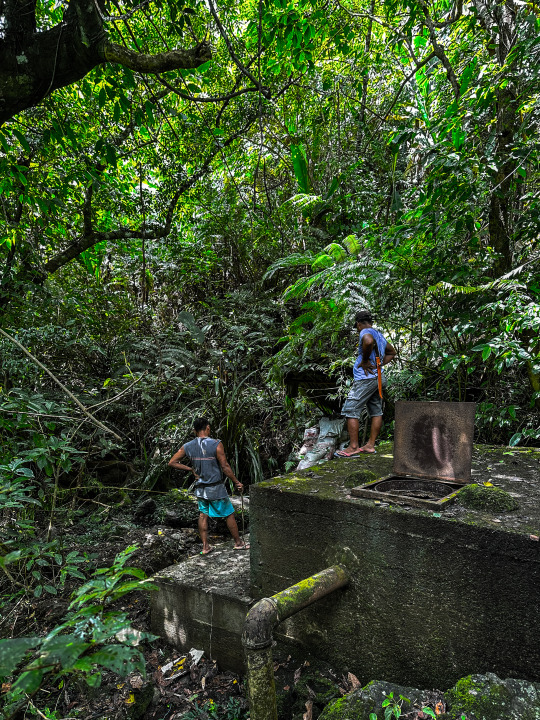
© Paolo Dala
Facilities Upgrade
We were asked to evaluate a Water District's spring box in the mountains of Catandaunes. We found out that this was built in 1955 and it's time for an upgrade... Hahaha. This thing is older than my Senior Citizen parents! It's crazy!
#Spring Box#Water Resources#Forest#People#Engineering#Mountain#Bato#Catanduanes#Philippines#On Assignment
0 notes
Text
water resources planning | civil engineering project management
Navigating the Future: The Role of Maps and Surveyors in Sustainable Water Resources Planning
Water, the elixir of life, is a finite and precious resource. As the world grapples with population growth, climate change, and environmental degradation, sustainable water resources planning cannot be overstated. In this article, we explore the pivotal role of maps surveyors using their expertise to chart a sustainable course for our planet's most vital asset.
The Significance of Water Resources Planning
Water resources planning is the art and science of managing and allocating water sustainably. It encompasses various activities, from safeguarding water quality to ensuring equitable distribution. With the global population expected to reach 9.7 billion by 2050 and climate change threatening water availability, adequate water resources planning is paramount to secure water for current and future generations.
The Role of Maps in Water Resources Planning
Maps serve as powerful visual tools in water resources planning. They allow planners and policymakers to understand the geographic distribution of water resources, identify vulnerable areas, and assess the impact of land use on water quality. Maps also play a vital role in communicating complex data to stakeholders, making informed decisions accessible to a wider audience.
Surveyors' Expertise in Hydrographic Surveying
Surveyors bring their specialized knowledge to the table through hydrographic surveying. This field involves mapping the physical features of bodies of water, including rivers, lakes, and oceans. Surveyors use a range of equipment, including sonar and GPS technology, to measure depths, map underwater terrain, and identify hazards. Their work is essential for understanding the dynamics of water bodies and ensuring safe navigation.
Topographic Surveys for Watershed Management
Surveying companies contribute to watershed management by conducting topographic surveys. These surveys provide critical elevation data for drainage, runoff, and floodplain management decisions. By mapping the topography of an area, surveyors help identify areas at risk of flooding and design effective flood control measures.
Innovations in Remote Sensing
In recent years, remote sensing technologies have revolutionized how maps are created, and water resources are monitored. LiDAR (Light Detection and Ranging) and satellite imagery enable mapping of high-resolution terrain and water bodies. These technologies offer a wealth of data invaluable for water resources planning, from tracking changes in land use to monitoring the health of ecosystems.
Geospatial Analysis for Water Allocation
Geographic Information Systems (GIS) and geospatial analysis are essential water resource planning tools. They enable planners to overlay multiple layers of information, such as land use, hydrology, and infrastructure, to make informed decisions about water allocation, reservoir management, and drought prediction. GIS allows a holistic understanding of the complex factors influencing water availability.
Challenges in Water Resources Planning
While maps surveyors and surveying companies play a crucial role in water resources planning, they face several challenges. Data accuracy and reliability are paramount, as decisions based on flawed data can have significant consequences. Urbanization and land development can also impact water bodies, altering their flow and quality. Developing sustainable water management policies is an ongoing challenge that requires careful consideration of social, economic, and environmental factors.
Case Studies in Sustainable Planning
Real-world examples demonstrate the impact of collaboration between maps surveyors, and government agencies in achieving sustainable water resources planning. Initiatives that have successfully balanced water allocation, environmental conservation, and community needs serve as inspiring models for future planning efforts.
Community Engagement and Education
Finally, community engagement and education are essential to sustainable water resources planning. Informed and engaged communities can play a crucial role in conserving water, adopting responsible practices, and supporting policies that protect this vital resource for future generations.
In conclusion, maps surveyors and surveying companies are indispensable allies in the journey toward sustainability. Their expertise in mapping, surveying, and data analysis contributes to informed decision-making, fosters sustainable water management, and helps safeguard this precious resource in an era of increasing water scarcity and environmental challenges. Their role remains pivotal in securing water for all as we navigate the future.
Kier + Wright is a company that specializes in providing civil engineering and land surveying services for the planning and construction some of California's most exciting land development projects. Their business is driven by a deep understanding of the importance of people, communities, and the places that bring them together. With every project, they work tirelessly to build connections and strengthen relationships. Through their work, Kier + Wright strives to keep communities moving forward, growing sustainably, steadily, and purposefully toward a better tomorrow.
#civil consultancy companies#civil engineer services#civil engineering project management#construction surveyor#engineering services#water resources planning#surveying companies
1 note
·
View note
Text
"A funny thing happened on the way to the enshittocene: Google – which astonished the world when it reinvented search, blowing Altavista and Yahoo out of the water with a search tool that seemed magic – suddenly turned into a pile of shit.
Google's search results are terrible. The top of the page is dominated by spam, scams, and ads. A surprising number of those ads are scams. Sometimes, these are high-stakes scams played out by well-resourced adversaries who stand to make a fortune by tricking Google[...]
Google operates one of the world's most consequential security system – The Algorithm (TM) – in total secrecy. We're not allowed to know how Google's ranking system works, what its criteria are, or even when it changes: "If we told you that, the spammers would win."
Well, they kept it a secret, and the spammers won anyway.
...
Some of the biggest, most powerful, most trusted publications in the world have a side-hustle in quietly producing SEO-friendly "10 Best ___________ of 2024" lists: Rolling Stone, Forbes, US News and Report, CNN, New York Magazine, CNN, CNET, Tom's Guide, and more.
Google literally has one job: to detect this kind of thing and crush it. The deal we made with Google was, "You monopolize search and use your monopoly rents to ensure that we never, ever try another search engine. In return, you will somehow distinguish between low-effort, useless nonsense and good information. You promised us that if you got to be the unelected, permanent overlord of all information access, you would 'organize the world's information and make it universally accessible and useful.'"
They broke the deal." -Cory Doctorow
Read the whole article: https://pluralistic.net/2024/02/21/im-feeling-unlucky/#not-up-to-the-task
6K notes
·
View notes
Note
Hey bestie whats a narrow boat? I saw you tag that on something you reblogged and I'm pretty curious now!



- Terry Darlington, Narrow Dog to Carcassone
A narrowboat (all one word) is a craft restricted to the British Isles, which are connected all over by a nerve-map of human-made canals. To go up and down hills, the canals are spangled with locks (chambers in which boats can be raised or lowered by filling or emptying them with water.) As Terry says above, the width of the locks was somewhat randomly determined, and as a result, the British Isles have a narrow design of lock - and a narrowboat to fit through them. A classic design was seventy feet long and six feet wide. Starting in the 18th century, and competing directly with trains, canal “barges” were an active means of transport and shipping. They were initially pulled along the towpaths by horses, and you can still see some today!
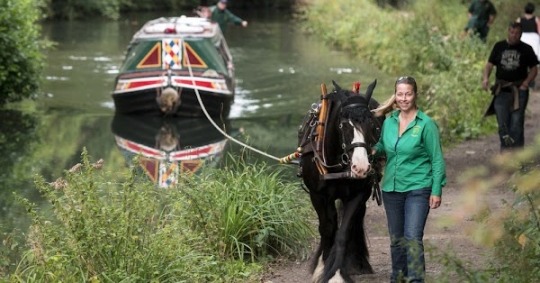
Later, engines were developed.
Even after the trains won the arms race, it was a fairly viable freight service right up until WW2. It’s slow travel, but uses few resources and requires little human power, with a fairly small crew (of women, in WW2) being capable of shifting two fully laden boats without consuming much fossil fuel.
In those times the barges were designed with small, cramped cabins in which the boaters and their families could live.
During its heyday the narrowboat community developed a style of folk art called “roses and castles” with clear links to fairground art as well as Romani caravan decor. They are historically decorated with different kinds of brass ornaments, and inside the cabins could also be distinctively painted and decorated.
Today, many narrowboats are distinctively decorated and colorful - even if not directly traditional with “roses and castles” they’ll still be bright and offbeat. A quirky name is necessary. All narrowboats, being boats, are female.
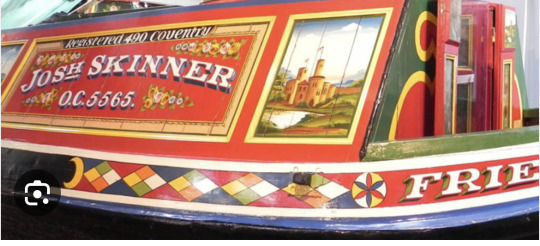

After a postwar decline, interest in the waterways was sparked by a leisure movement and collapsing canals were repaired. Today, the towpaths are a convenient walking/biking trail for people, as they connect up a lot of the mainland of the UK, hitting towns and cities. Although the restored canals are concrete-bottomed, they’re attractive to wildlife. Narrowboats from the 1970s onward started being designed for pleasure and long-term living. People enjoy vacationing by hiring a boat and visiting towns for a cuter, comfier, slower version of a campervan life. And a liveaboard community sprang up - people who live full-time on boats. Up until the very restrictive and nasty laws recently passed in the UK to make it harder for travelling peoples (these were aimed nastily at vanlivers and the Romani, and successfully hit everyone) this was one of the few legal ways remaining to be a total nomad in the UK.
Liveaboards can moor up anywhere along the canal for 28 days, but have to keep moving every 28 days. (Although sorting out the toilet and loading up with fresh water means that a lot of people move more frequently than that.) you can also live full-time in a marina if they allow it, or purchase your own mooring. In London, where canal boats are one of the few remaining cheapish ways to live, boats with moorings fetch the same prices as houses. It can be very very hard for families to balance school, parking, work, and all the difficulties of living off-grid- but many make it work. It remains a diverse community and is even growing, due to housing pressures in the UK. Boats can be very comfortable, even when only six feet wide. When faced with spending thousands of pounds on rent OR mooring up on a nice canal, you can see why it seems a romantic proposition for young people, and UK television channels always have slice-of-life documentaries about young folks fixing up their very own quirky solar-powered narrowboat. I don’t hate; I did it myself.
If you’re lucky, you might even meet some of the cool folks who run businesses from their narrowboats: canal-side walkers enjoy bookshops, vegan bakeries, ice-cream boats, restaurants, artists and crafters. There are Floating Markets and narrowboat festivals. It’s generally recognised that boaters contribute quite a lot to the canal - yet there are many tensions between different kinds of boaters (liveaboards vs leisure boaters vs tourists) as well as tensions with local settled people, towpath users like cyclists, and fishermen. I could go on and on explaining this rich culture and dramas, but I won’t.
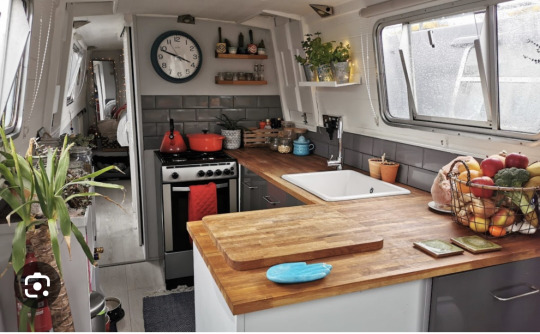

Phillip Pullman’s Gyptians are a commonly cited example of liveaboards - although they were based on the narrowboat liveaboards that Pullman knew in Oxford, their boats are actually Dutch barges. Dutch barges make good homes but are too wide to access most of the midlands and northern canals, and are usually restricted to the south of the UK. So they’re accurate for Bristol/London/Oxford, and barges are definitely comfier to film on. (Being six feet wide is definitely super awkward for a boat.) but in general Dutch barges are less common, more expensive and can’t navigate the whole system.

However, apart from them, there are few examples of narrowboat depictions that escaped containment. So it’s quite interesting that there is an entire indigenous special class of boat, distinctive and highly specialised and very cute, with an associated culture and heritage and folk art type, known to all and widely celebrated, and ABSOLUTELY UNKNOWN outside of the UK - a nation largely known around the world for inflicting its culture on others. They’re a strange, sweet little secret - and nobody who has ever loved one can resist pointing them out for the rest of their lives, or talking about them when asked to. Thank you for asking me to.
6K notes
·
View notes
Text
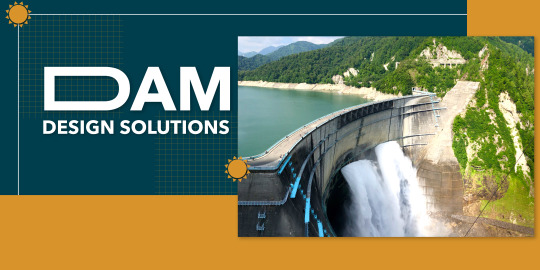
Modernized Solutions for Innovative Dam Design
When it comes to dam design solutions, engineers focus on safety, efficiency, and environmental impact. Various techniques, like reinforced concrete construction, spillway enhancements, and sediment management systems, are employed to ensure the stability and longevity of dams. Advanced technologies, such as sensors and monitoring systems, further enhance safety by providing real-time data on structural integrity. Additionally, eco-friendly designs incorporate features like fish ladders and habitat restoration to mitigate ecological disruptions caused by dam construction.
#water resources engineering#mining site#engineering solutions#industrial engineering consultants#dam design solutions
0 notes
Photo

On Wednesday, Hackers target the verified Twitter account of India's Water resources. Utilized it by posting fake posts related to cryptocurrency with images of Twitter CEO!
#The Twitter Account of the Ministry of Jal Shakti was attacked twice within a month#hacking the verified account of India's water resource#Ministry of Jal Shakti's Twitter handle#social engineering attack#The demand of India's privacy concerns#Hackers hack Twitter handle of India's Jal Shakti
0 notes
Text
I went down the internet rabbit hole trying to figure out wtf vegan cheese is made of and I found articles like this one speaking praises of new food tech startups creating vegan alternatives to cheese that Actually work like cheese in cooking so I was like huh that's neat and I looked up more stuff about 'precision fermentation' and. This is not good.
Basically these new biotech companies are pressuring governments to let them build a ton of new factories and pushing for governments to pay for them or to provide tax breaks and subsidies, and the factories are gonna cost hundreds of millions of dollars and require energy sources. Like, these things will have to be expensive and HUGE
I feel like I've just uncovered the tip of the "lab grown meat" iceberg. There are a bajillion of these companies (the one mentioned in the first article a $750 MILLION tech startup) that are trying to create "animal-free" animal products using biotech and want to build large factories to do it on a large scale
I'm trying to use google to find out about the energy requirements of such facilities and everything is really vague and hand-wavey about it like this article that's like "weeeeeell electricity can be produced using renewables" but it does take a lot of electricity, sugars, and human labor. Most of the claims about its sustainability appear to assume that we switch over to renewable electricity sources and/or use processes that don't fully exist yet.
I finally tracked down the source of some of the more radical claims about precision fermentation, and it comes from a think tank RethinkX that released a report claiming that the livestock industry will collapse by 2030, and be replaced by a system they're calling...
Food-as-Software, in which individual molecules engineered by scientists are uploaded to databases – molecular cookbooks that food engineers anywhere in the world can use to design products in the same way that software developers design apps.
I'm finding it hard to be excited about this for some odd reason
Where's the evidence for lower environmental impacts. That's literally what we're here for.
There will be an increase in the amount of electricity used in the new food system as the production facilities that underpin it rely on electricity to operate.
well that doesn't sound good.
This will, however, be offset by reductions in energy use elsewhere along the value chain. For example, since modern meat and dairy products will be produced in a sterile environment where the risk of contamination by pathogens is low, the need for refrigeration in storage and retail will decrease significantly.
Oh, so it will be better for the Earth because...we won't need to refrigerate. ????????
Oh Lord Jesus give me some numerical values.
Modern foods will be about 10 times more efficient than a cow at converting feed into end products because a cow needs energy via feed to maintain and build its body over time. Less feed consumed means less land required to grow it, which means less water is used and less waste is produced. The savings are dramatic – more than 10-25 times less feedstock, 10 times less water, five times less energy and 100 times less land.
There is nothing else in this report that I can find that provides evidence for a lower carbon footprint. Supposedly, an egg white protein produced through a similar process has been found to reduce environmental impacts, but mostly everything seems very speculative.
And crucially none of these estimations are taking into account the enormous cost and resource investment of constructing large factories that use this technology in the first place (existing use is mostly for pharmaceutical purposes)
It seems like there are more tech startups attempting to use this technology to create food than individual scientific papers investigating whether it's a good idea. Seriously, Google Scholar and JSTOR have almost nothing. The tech of the sort that RethinkX is describing barely exists.
Apparently Liberation Labs is planning to build the first large-scale precision fermentation facility in Richmond, Indiana come 2024 because of the presence of "a workforce experienced in manufacturing"
And I just looked up Richmond, Indiana and apparently, as of RIGHT NOW, the town is in the aftermath of a huge fire at a plastics recycling plant and is full of toxic debris containing asbestos and the air is full of toxic VOCs and hydrogen cyanide. ???????????? So that's how having a robust industrial sector is working out for them so far.
5K notes
·
View notes
Text
Water scarcity
Water is a necessary component of life. Although water is believed to be plentiful in nature, fresh water, on which humans rely, is not.
Water is a vital component of life. Although water is believed to be plentiful in nature, fresh water, on which humans rely, is not. Fresh water accounts for only 2.5% of the world’s water, with surface water accounting for 1.2% and groundwater accounting for 30.1%.
A water source is considered to be stressed when there is strain on it. Water scarcity comes before water stress. Water shortage…
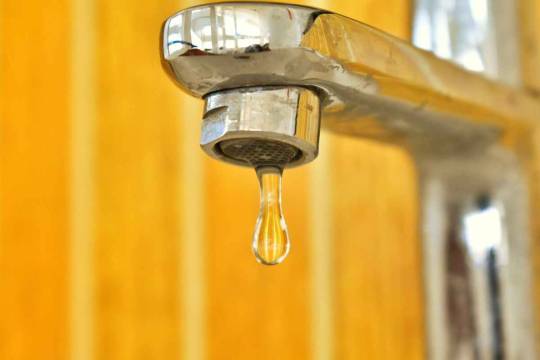
View On WordPress
#Environmental Engineering#fresh water#groundwater#Rainwater harvesting#surface water#wastewater reclamation#wastewater treatment#water#water resources#water scarcity#water sources#water stress#water supply
1 note
·
View note
Text
"Namibia is the driest country in Sub-Saharan Africa, and home to two of the world’s most ancient deserts, the Kalahari and the Namib. The capital, Windhoek, is sandwiched between them, 400 miles away from the nearest perennial river and more than 300 miles away from the coast. Water is in short supply.
It’s hard to imagine life thriving in Windhoek, yet 477,000 people call it home, and 99 per cent of them have access to drinking water thanks to technology pioneered 55 years ago on the outskirts of the city. Now, some of the world’s biggest cities are embracing this technology as they adapt to the harshest impacts of climate change. But Namibia leads the way.
How did this come about? In the 1950s, Windhoek’s natural resources struggled to cope with a rapidly growing population, and severe water shortages gripped the city. But disaster forced innovation, and in 1968 the Goreangab Water Reclamation Plant in Windhoek became the first place in the world to produce drinking water directly from sewage, a process known as direct potable reuse (DPR).
That may sound revolting, but it’s completely safe. Dr Lucas van Vuuren, who was among those who pioneered Windhoek’s reclamation system, once said that “water should not be judged by its history, but by its quality”. And DPR ensures quality.
This is done using a continuous multi-barrier treatment devised in Windhoek during eight years of pilot studies in the 1960s. This process – which has been upgraded four times since 1968 – eliminates pollutants and safeguards against pathogens by harnessing bacteria to digest the human waste and remove it from the water. This partly mimics what happens when water is recycled in nature, but Windhoek does it all in under 24 hours...
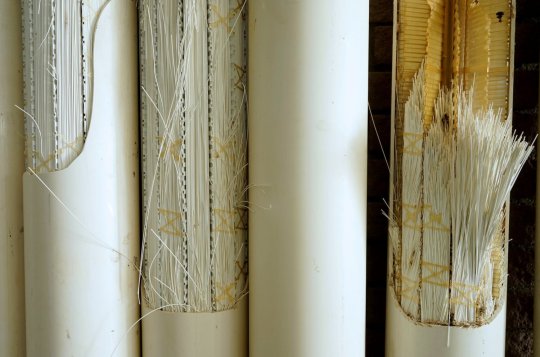
Pictured: These ultrafiltration membranes help to remove bacteria, viruses and pathogens. Image: Margaret Courtney-Clarke
“We know that we have antibiotics in the water, preservatives from cosmetics, anti-corrosion prevention chemicals from the dishwasher,” Honer explains. “We find them and we remove them.”
Honer adds that online instruments monitor the water continuously, and staff ensure that only drinking water that meets World Health Organisation (WHO) guidelines is sent to homes. If any inconsistencies are detected, the plant goes into recycle mode and distribution is halted until correct values are restored.
“The most important rule is, and was, and always will be ‘safety first’,” says Honer. The facility has never been linked to an outbreak of waterborne disease, and now produces up to 5.5m gallons of drinking water every day – up to 35 per cent of the city’s consumption.
Namibians couldn’t survive without it, and as water shortages grip the planet, Windhoek’s insights and experience are more important than ever.
Interest from superpowers across the globe
In recent years, delegations from the US, France, Germany, India, Australia, Singapore, and the United Arab Emirates have visited Windhoek seeking solutions to water shortages in their own countries.
Megadrought conditions have gripped the US since 2001, and the Colorado River – which provides 40 million people with drinking water – has been running at just 50 per cent of its traditional flow. As a result, several states including Texas, California, Arizona and Colorado are beginning to embrace DPR.
Troy Walker is a water reuse practice leader at Hazen and Sawyer, an environmental engineering firm helping Arizona to develop its DPR regulations. He visited Windhoek last year. “It was about being able to see the success of their system, and then looking at some of the technical details and how that might look in a US facility or an Australian facility,” he said. “[Windhoek] has helped drive a lot of discussion in industry. [Innovation] doesn’t all have to come out of California or Texas.”

Pictured: The internal pipes and workings of Namibia's DPR plant. As water becomes scarcer in some parts, countries are looking to DPR for solutions. Image: Margaret Courtney-Clarke
Namibia has also helped overcome the biggest obstacle to DPR – public acceptance. Disgust is a powerful emotion, and sensationalist ‘toilet to tap’ headlines have dismantled support for water reuse projects in the past. Unfortunately, DPR’s biggest strength is also its biggest weakness, as the speed at which water can re-enter the system makes it especially vulnerable to prejudice, causing regulators to hesitate. “Technology has never been the reason why these projects don’t get built – it’s always public or political opposition,” says Patsy Tennyson, vice president of Katz and Associates, an American firm that specialises in public outreach and communications.
That’s why just a handful of facilities worldwide are currently doing DPR, with Windhoek standing alongside smaller schemes in the Philippines, South Africa and a hybrid facility in Big Spring, Texas. But that’s all changing. Drought and increased water scarcity worldwide are forcing us to change the way we think about water.
Now, the US is ready to take the plunge, and in 2025, El Paso Water will begin operating the first ‘direct to distribution’ DPR facility in North America, turning up to 10m gallons of wasterwater per day into purified drinking water – twice as much as Windhoek. San Diego, Los Angeles, California, as well as Phoenix, Arizona are also exploring the technology."
Of course, DPR is not a silver bullet in the fight against climate change. It cannot create water out of thin air, and it will not facilitate endless growth. But it does help cities become more climate resilient by reducing their reliance on natural sources, such as the Colorado River.
As other nations follow in Namibia’s footsteps, Windhoek may no longer take the lead after almost six decades in front.
“But Windhoek was the first,” Honer reminds me. “No one can take that away.”"
-via Positive.News, August 30, 2023
#namibia#africa#desert#water shortage#water conservation#dpr#potable water#water recycling#clean water#drought#united states#colorado river#science and technology#sanitation#good news#hope
2K notes
·
View notes
Text
Exploring the Diverse Techniques of River Erosion Works
Introduction
Rivers, with their ever-flowing currents, have the incredible power to shape the landscape over time. However, this natural force can sometimes pose a threat to human settlements, infrastructure, and agricultural lands. To mitigate the adverse effects of river erosion, various engineering techniques have been developed over the years. In this article, we will delve into the different…
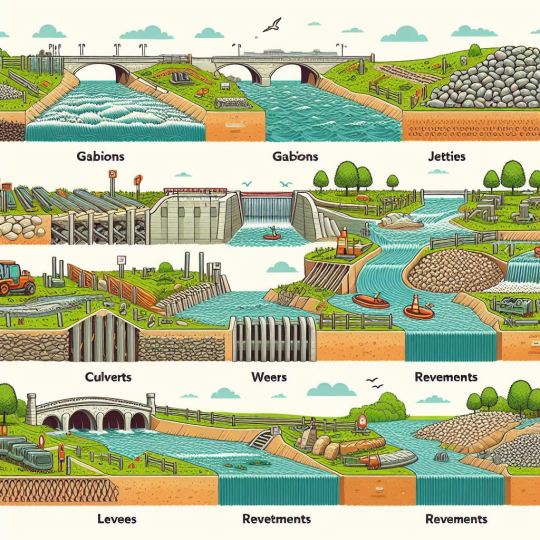
View On WordPress
#bank protection#barrages#bioengineering#channelization#dams#ecological conservation#environmental sustainability#erosion control#groynes#realignment#revetments#riprap#River erosion#river training#sediment control#sediment control structures#spurs#sustainable engineering#vegetative bank protection#water resource management
0 notes